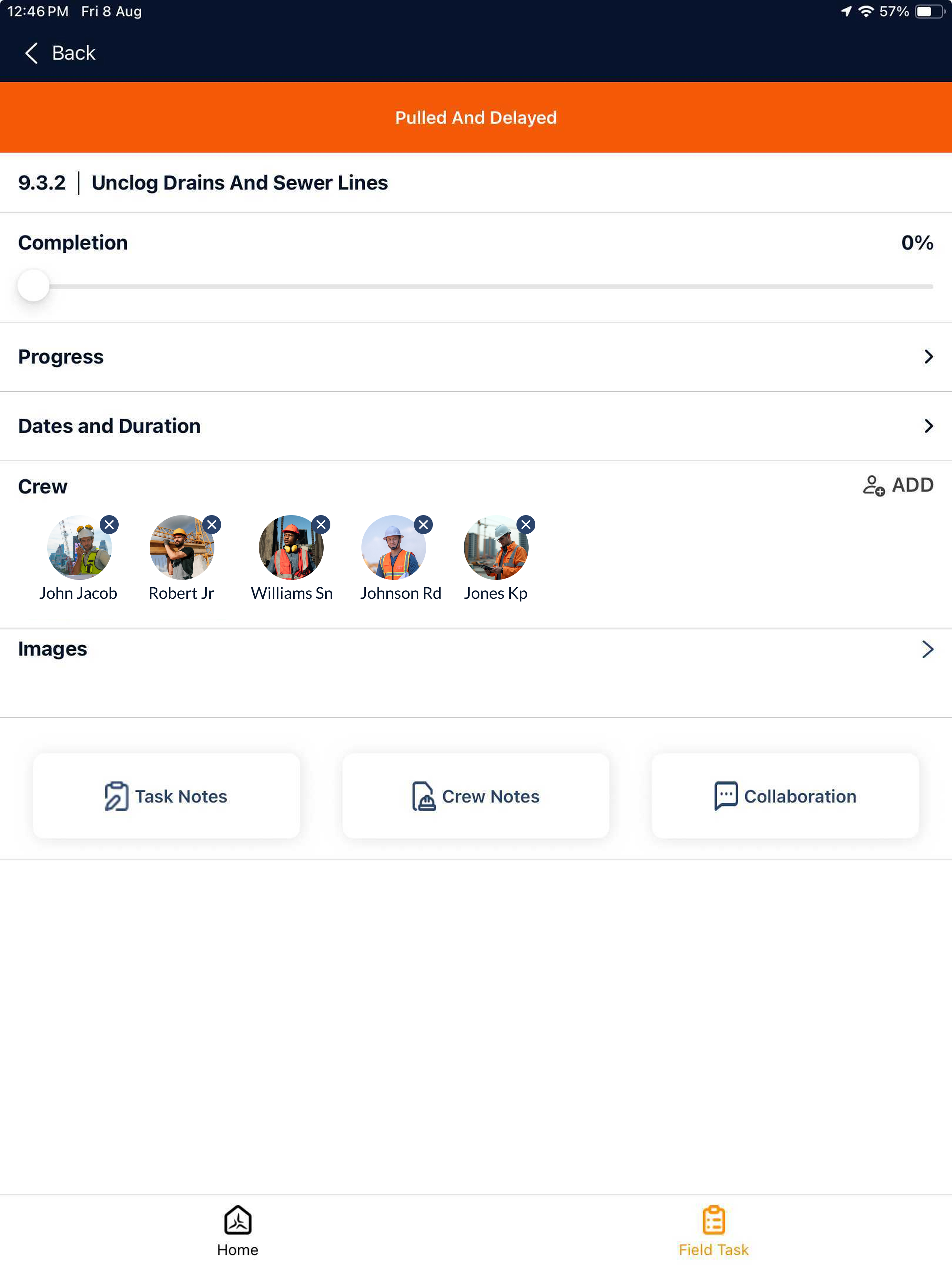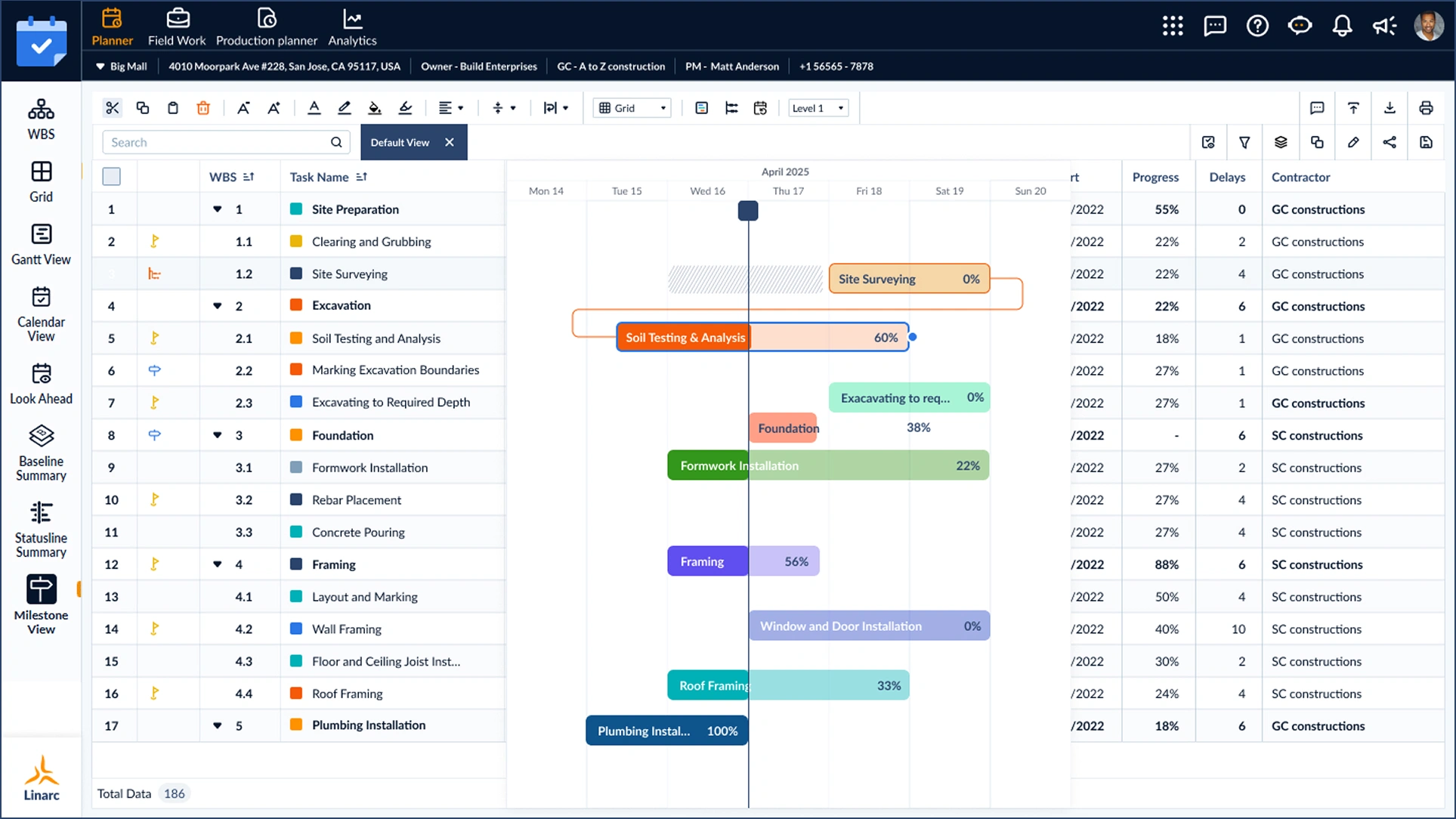
If you walk any mid-size construction jobsite, you’ll find the same scene: a giant, multicolored Gantt chart pinned to the trailer wall, printed two weeks ago and already out of date. Everyone nods at it during the kickoff meeting, but by week three, the foremen are working off WhatsApp threads, hand-drawn whiteboards, and gut instinct.
Static schedules aren’t just ignored, they mislead. They create the illusion of control while real coordination happens in back-channel texts and “drive-by” conversations. The gap between what the schedule says and what the field actually does is where rework grows and margin vanishes.
Below, we explain why traditional Gantt charts fail to support your crews and outline a more dynamic, milestone-based approach that makes the schedule the operational heartbeat of the jobsite.
1. The False Comfort of the Master Gantt
Static master schedules feel comprehensive. They capture every activity, dependency, and float path. But they also assume:
- Conditions won’t change.
- All teams will read the entire file.
- Someone has time to re-publish updates daily.
Reality checks each box:
- Weather shifts delay concrete, yet the baseline bars don’t budge.
- Trade partners skim the PDF once, then revert to their own spreadsheets.
- Project managers are buried in RFIs and submittals, rather than refining Gantt logic.
A static schedule offers comfort in the trailer, but creates chaos in the field.
If the document is locked in the trailer, the field will find workarounds, and they’re rarely aligned.
2. Why Field Crews Tune Out
a. Too Much Detail, Not Enough Context
A 5,000-line schedule is impossible to digest during a morning huddle. Supers need the next 48 hours, not the entire 18-month bar chart.
b. No Resource Visibility
Crews don’t just need dates; they need to know who and what is available (e.g., lifts, forklifts, formwork). Traditional Gantt charts rarely map labor or equipment loads in a way that allows foremen to take action.
c. Update Lag
When it takes four days to reflect a two-day slip, crews lose faith and default to text chains. Trust, once lost, is hard to regain.
So, how do you turn an “ignored PDF” into a “daily playbook”? Shift from static bars to living milestones.

3. From Bars to Beats: The Milestone-Based Schedule
Linarc Milestone View automatically links tasks, reveals the remaining days, and displays progress in real-time. The takeaway: Milestones translate strategy into simple beats the field can march to.
Key Elements of a Milestone-Driven Approach
- Short-Range + Long-Range Views
Long-range: Owners stay comfortable.
Short-range: Look-ahead snapshots (three-week, 48-hour) drive daily execution. - Resource & Cost Tie-In
Linking labor codes, equipment reservations, and cost impacts directly to each milestone makes the schedule a single source of truth, not a detached chart. - Automatic Versioning
Import from P6 or build natively. Either way, every update timestamps, versions, and highlights changes so no one asks, “Which file is latest?” - Mobile Accessibility
Supers edit tasks on their phones. The update appears in the office before the next coffee break. That immediacy builds trust and adoption.
Milestones give crews the “why” and “when.” But they still need tooling that respects the way field teams communicate.

4. Turning Schedules Into Conversations
- Sorting & Filtering Grids
Every grid (except the long-range Gantt) now supports on-the-fly sorting. Foremen can slice tasks by area or trade in seconds. - Custom Pins & Markups
A milestone doesn’t live in a vacuum; it happens at a location. With over 50 pin icons (Tower Crane, Material Drop Zone, Safety Station), crews can visualize exactly where the day’s work is. - Automatic Drive Sync
The newest plan set can’t hide in someone’s inbox. A one-time SharePoint/Google Drive sync ensures that the schedule and the drawing log pull from the same source.

5. Leadership Checklist: Making the Schedule Your Jobsite’s Heartbeat
Schedules Don’t Fail. We Let Them Fail.
A static Gantt isn’t evil; it’s just insufficient. Contractors win when the schedule evolves from a document into a dialogue—updated in real-time, visible in the field, and integrated with resources and costs.
Ready to see a milestone-driven schedule live in action—no spreadsheets, no lag?
Register for the Aug 26 “Linarc vs. Procore” webinar to see how mid-size builders are ditching static Gantts for field-first scheduling.


.webp)
.webp)
.webp)

